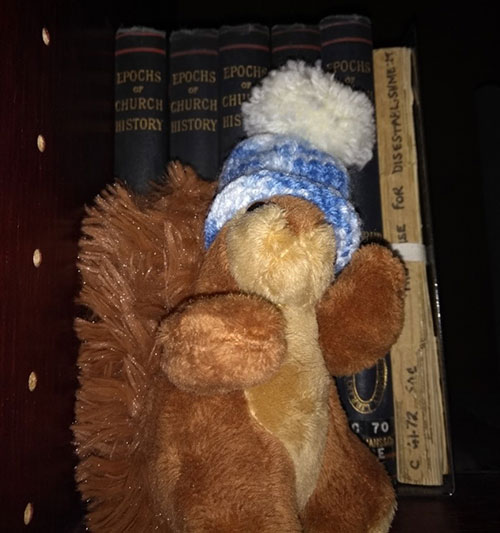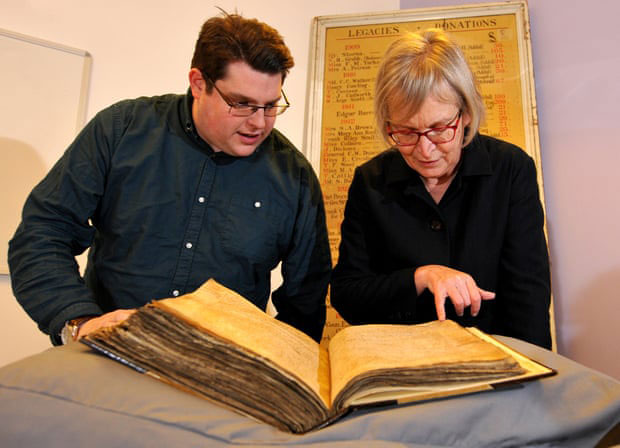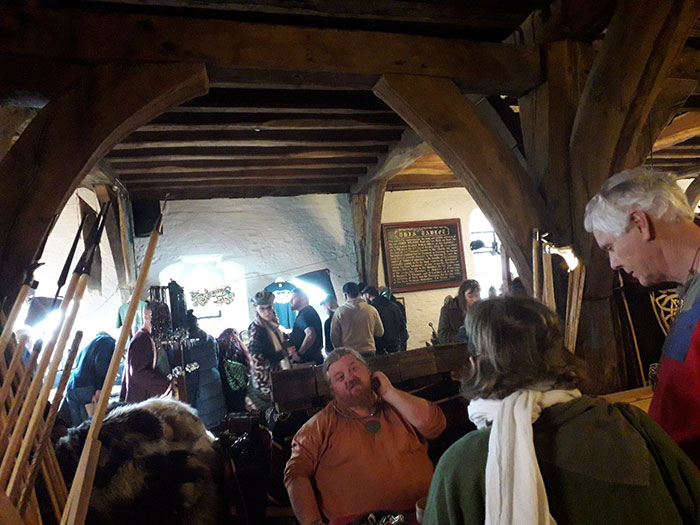I blogged back in November with the other 2018-19 fellows as we started out on our professional fellowships. It isn’t long ago, but it feels as though a lot of time has passed, so it’s a good time to report on what I’ve been doing. My fellowship focuses on collections institutions and their engagement with wide audiences – audiences who don’t necessarily come with a research question in mind, but who can engage with unique and distinctive holdings in many ways.
This has been a vital few months of research and data-gathering. It has also involved one of the core elements of the professional fellowship: a placement at a Research Libraries UK member institution. In my case, I spent ten days in York, working with York University Libraries and Archives, based in the Borthwick Institute for Archives. Placements can be used for many things, depending on the focus of the fellowship. For me, it was a chance to meet and talk with staff at the university on a wealth of examples of the ways the Borthwick reaches out beyond its searchroom researchers.

I did meet Archie in person, too
I heard about:
- How a historical language project like the Yorkshire Dictionary can be a way into thinking about history and place, with the easy entry point of the words we use daily
- A range of cataloguing projects, each of which picks up on the specificity of its content to reach a different audience. These ranged from the citizen scientist potential of the Yorkshire Wildlife Trust project to Victorian literary networks, to the fascinating partnership work with Alcoholics Anonymous on how to provide access to their important – and highly sensitive – records
- Student teaching, from medieval palaeography skills to creative inspiration for storytelling and digital engagement
- Accountability and research sustainability – core roles for a university repository
- Social media reach, and finding new ways to explore elements of collections to a passing online audience (as I’m writing this, Archie the Archive Squirrel has just investigated ‘item 3.1415’ for Pi Day on @UoYBorthwick)
I had accidentally timed my placement to arrive just after Joan of Leeds, the death-faking, convent-escaping nun, went viral, raising the profile of the Northern Way project on a global scale. This is such a fascinating piece of work: to open up access to 14th-century archbishops’ records by making them more searchable and adding more points of access, as well as working with community historians to make active use of the records. The fact that one fragmentary story from the records garnered such media coverage confirms the potential for archives to capture people’s imagination and have resonance for today.

Gary Brannan and Sarah Rees Jones examine one of the archbishops’ registers. Photograph: University of York
The reason I opted to do my placement at York was partly the broad range of engagement work done at the Borthwick, but also because I had the opportunity to work with the university’s Institute for the Public Understanding of the Past: a specialist institute working on public history. It gave me a chance to meet students and staff specialising in this area, and attend sessions on aspects of public history that I’m not so familiar with: from museum display at the National Railway Museum to acoustic heritage, exploring and recreating historic soundscapes.
To benefit from the links with IPUP, and to fit the placement around my main role, I ended up timing my placement for late February. That meant I could have some very productive discussions with MA students in Public History, who are refining their experience on placements across different types of public heritage institutions. It also meant that I was in York during the Jorvik Viking Festival. Most UK archives hold very little to do with the Vikings, but it was still a great chance to see a range of examples of public history delivery: from a city walking tour to a battle spectacular, and from a curator’s tour of an exhibition to commercial marketplaces opened in some of York’s spectacular historic buildings.

The packed Viking market in the medieval Merchant Adventurers’ Hall
I haven’t only been focused on the placement this quarter. I’ve been analysing the results of a survey of collections institutions just before Christmas, about what kinds of work they do (if any) to engage wider audiences. I’ll write more about this in a future blog about the outcomes of this fellowship, but for now I will share just one headline. Of the 128 respondents, 94% actively include public history activity, with wider non-research audiences, as a core part of their service offer. So there’s a lot of work being done, across many institutions. Events like the Viking Festival show the power of the past to excite people, to spend time and money on imagining and experiencing aspects of the past. I think archives have a lot to offer here. And I’ll be working on that next…
I’d like to thank everyone who completed the survey, and all those at York University who shared their activities and thoughts during my placement. Above all, many thanks to Gary Brannan. He ensured that I met the widest possible range of colleagues on the placement, and spent a lot of time sharing his own ideas and experiences as Access Archivist. I’m looking forward to sharing the outputs over the second half of the fellowship year.